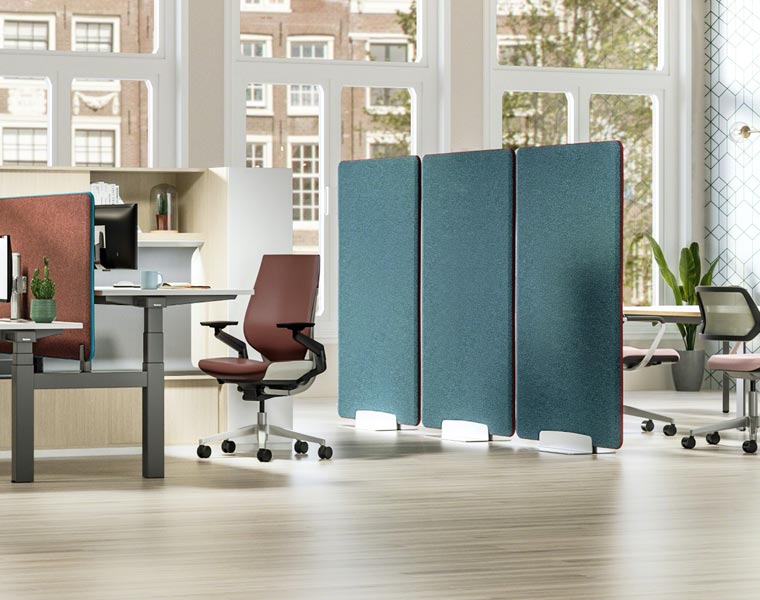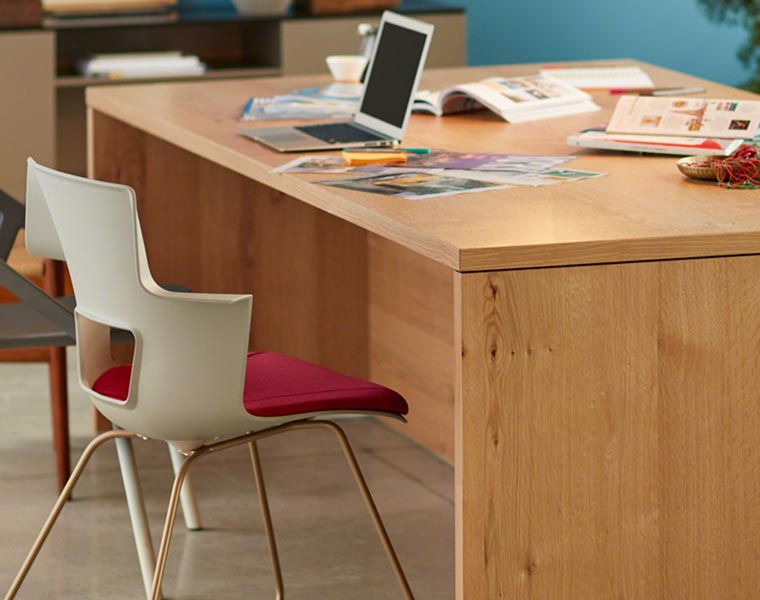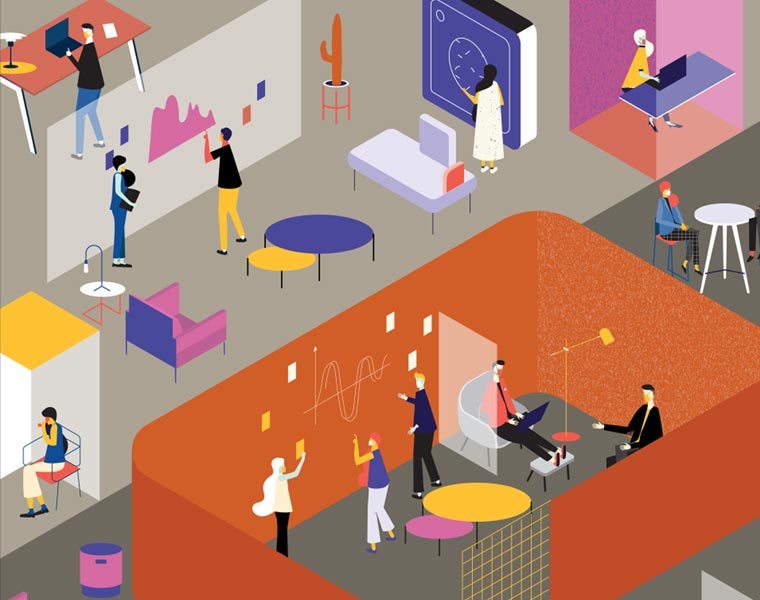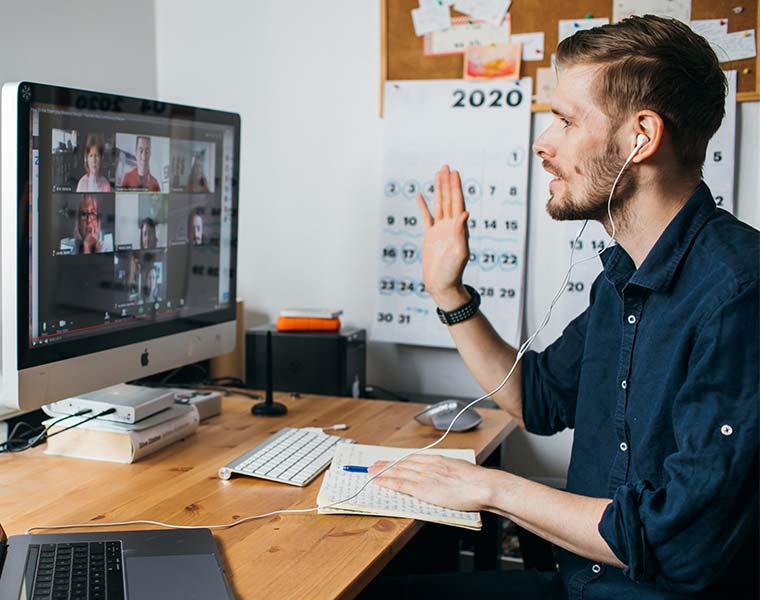In a recent article from our Knowledge Centre, we pose the question: is retrofitting really the answer for the post-pandemic workplace?, sharing some ideas from our experts on how we think workspaces of today (and tomorrow) need to evolve going forward, into what could potentially be an “office renaissance”.
Do our workspaces really need a complete office refurbishment to adhere to safety guidelines? Are plastic protective screens between each employee really the only option?
In this article, we hone our focus in on the controversial topic of plastic desk dividers when questioning how the design and fit out of COVID-secure workplaces might be best addressed. These plastic screens were – and still are, to some respect – a popular response when considering the return to work post-lockdown. A kneejerk reaction, some might say, to a strict endeavour to keeping staff healthy and feeling safe.

For some, plastic desk screens will still be the most desirable option and in some sectors, it is clear to see why. However, for many workspaces, we believe that there is a variety of higher performing alternatives. Albeit no more effective in infection control or germ-blocking but the four alternative space division solutions below each bring additional benefits, including:
- Multi-functionality (so extra added value)
- Longevity of use for the future
- Collaborative credentials for helping teamwork adapt to the ‘new normal’
Tall indoor planters and living walls
An effective and visually appealing way to zone of neighbourhoods and microenvironments within the wider workspace ecosystem is to use tall planters. These could either be filled with artificial plants or real indoor plants, depending on your maintenance preferences as a business.

As well as being an aesthetically pleasing way to divide space and staff within a workspace, the placement of real plants indoors is also a great way to purify air quality. We’ve spoken about the benefits of biophilia many times before, with purification of indoor atmosphere being one of the most significant when considering employee health and infection control.
Write-on walls and portable screens
When designing a workspace and the resources you want to include in it, it’s always essential to consider how you will cater for both digital and analogue creativity. Portable write-on walls, boards and wipe-clean screens are a great way to create space division and physical separation whilst still supporting collaboration, teamwork and idea-sharing.

Acoustic fabric screen dividers
Whilst plastic desk dividers are effective in preventing the spread of germs between employees, they don’t really offer many other valuable functionalities. Opting to divide space with fabric screens instead which are manufactured using materials that have acoustic properties means you will also be able to benefit from additional sound absorption and noise control. These screens can either be attached to the workstation or mounted on castors to make them portable and therefore even more flexible and reactive to requirement over time.

Strategic use of storage units
When a customer comes to the Penketh Interiors design team looking to zone a workspace without creating physical barriers or limiting collaboration and communication, we often recommend a strategic storage solution. So, rather than utilising heavyweight cabinets and shelving, we would go for something with some transparent feature as demonstrated by the Axiom storage unit shown above. This means you will be able to command and control the use of the space without having employees feeling segregated or restricted.



